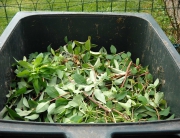Okay, here’s the deal. I started working on my own vehicles because I was tired of paying a lot of money for repairs, and well, frankly, I figured how hard could it be? And what I found was, most of the time, it’s not difficult at all. If you have the time and the tools, there are a lot of car repairs you can make yourself for a fraction of the cost.
And what are those costs and why are they so much? Well, let’s break it down and keep it real!
Big Secret #1
Auto shops charge you more for the parts than you would pay if you bought those same parts yourself, usually THREE TIMES the amount of the retail price, and sometime FOUR or FIVE times as much! You may be asking…why? Well, it’s simple. It’s because they can, and so they do! Auto shops count on your lack of knowledge of the cost of parts and your inability to make the repairs yourself.
Let me give you a typical example. Rose, a friend of mine, brought me an old auto repair receipt (she keeps them all) from 2005. She had taken her car in to her favorite repair shop (she had been going there for years) and they replaced the clutch master cylinder and clutch slave cylinder on her car. She was charged $441.47. Rose’s invoice figures appears below:
Honda Civic 1996
Parts: 223.00
Labor: 177.00
Shop Supplies: 3.00
Hazardous Waste: 3.00
Tax: 35.73_
Total $441.73
Now, there are a couple of factors to consider, such as if the parts are OEM (which means original equipment manufacturer), which tend to cost more, or if they are aftermarket parts. Typically, OEM parts are what you will get if you take your automobile to the dealer, and aftermarket are what are available from auto parts stores, and are overwhelmingly used by small independent auto repair shops and by do-it-yourselfers. I looked up the OEM parts for Rose’s Honda Civic online, and found the clutch master cylinder and clutch slave cylinder replacement parts for $123.00. Then I called the AutoZone, and I was quoted a price of $37.00 for both the clutch slave and the clutch master cylinders. That’s right! Are you getting the picture? Rose took her car to an independent shop, where she was charged almost double the cost of the OEM parts, and a little more than 5 times the amount of aftermarket parts, which were probably what were used in her automobile. OUCH!
Big Secret #2:
The next secret auto shops don’t want women to know is that there is something called the book rate, (it’s a book or software program) which tells them how long a job will take to complete for your car’s particular make, model and year. In Rose’s case the two-cylinder replacement job should take 2.3 hours. And here’s the rub: If the job takes less time to complete, and it usually does, they still charge for 2.3 hours of work! The shop owners love this because they are paid by you for time they might be working on another car. This adds up quickly. Here in Seattle, a typical dealer charges $100.00 an hour for repairs, and an independent shop charges on average $89.00 an hour.
Big Secret #3
And the final thing that car repair shops don’t want women to know is, shop supplies charges are for rags and cleaning solution, plastic gloves, etc. That’s right, they’re charging you for cleaning supplies.
Now, you probably wondering about the hazardous waste charge. Well, it usually is a legitimate charge, when they have to dispose of tires, oil, fluids etc. But be careful, really look at your invoice and make certain that the hazardous charge isn’t just being tacked on for the heck of it. Rose’s shop gave her an oil change with her repair, and so they charged her a hazardous waste charge to dispose of the oil.
Well, the good news is, now you know where your auto repair dollar is going. Secondly, and perhaps most importantly, you can make some of these repairs yourself for a fraction of the cost. The DIY price for Rose’s repair would be between $38 and $123, depending upon whether she used OEM or aftermarket parts, and to be honest, it’s an easy installation. It’s something she could easily do herself if someone showed her how to do the job. This would have saved her between 60% and 90% of what she paid.
We at See Jane Drill are committed to showing you how to take care of your own car, feel empowered, and most of all, save a lot of money!!
Helpful Resources:
For cost estimates on a wide range of repairs for all types of automobiles, check out: AutoMD.com
For parts prices either online or at your local store, check out: AutoZone
BY LEAH BOLDEN, SEE JANE DRILL
Where Beginner Home Improvement Enthusiasts Come to Learn






Leave A Comment